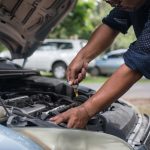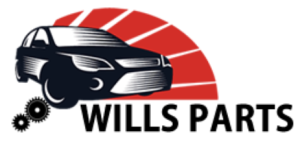Signs of Fan Belt Wear

Understanding the signs of fan belt wear is crucial for maintaining the health and longevity of your vehicle. Fan belts, also known as serpentine belts or drive belts, are critical components in your vehicle’s engine system. Responsible for powering essential components such as the alternator, water pump, power steering pump, and air conditioning, these belts endure a significant amount of wear and tear over time. In this comprehensive guide, we will explore common indicators of fan belt deterioration, their implications, and the importance of timely replacement.
Visual Inspection:
One of the simplest methods to detect fan belt wear is through visual inspection. Look for signs of cracking, fraying, or glazing on the surface of the belt. Cracks, which can appear as small fissures or large splits, indicate structural weakness and impending failure. Fraying occurs when the edges of the belt become worn and start to separate, reducing its effectiveness. Additionally, if the belt appears glossy or glazed, it may be a sign of overheating and excessive friction, necessitating immediate attention.
Squealing Noises:
A common auditory cue of fan belt wear is a high-pitched squealing noise coming from the engine compartment. This noise typically occurs during engine startup or acceleration and is caused by the slipping of the belt on the pulleys. Squealing noises can result from a variety of issues, including belt misalignment, insufficient tension, or surface contamination. Ignoring these sounds can lead to further damage to the belt and other engine components, underscoring the importance of prompt investigation and repair.
Belt Tension:
Proper tension is essential for the optimal functioning of fan belts. Over time, belts may stretch or become loose, compromising their ability to transfer power effectively. A simple test to assess belt tension involves pressing down on the belt with moderate pressure. Ideally, the belt should deflect no more than half an inch. Excessive deflection indicates insufficient tension and necessitates adjustment or replacement. Conversely, if the belt feels rigid and difficult to depress, it may be too tight, leading to accelerated wear on both the belt and pulleys.
Performance Issues:
As fan belts play a crucial role in powering various engine components, any deterioration can impact vehicle performance. Symptoms such as dimming headlights, erratic power steering, overheating, or battery drain may indicate belt-related issues. For instance, a worn-out alternator belt can result in inadequate charging of the battery, leading to electrical problems and potential stalling of the vehicle. Monitoring these performance indicators can help diagnose underlying belt wear and prevent more severe mechanical issues.
Mileage and Age:
While there is no predetermined lifespan for fan belts, factors such as mileage and age can influence their durability. As a general rule of thumb, most manufacturers recommend inspecting and replacing fan belts every 60,000 to 100,000 miles or every five to seven years, whichever comes first. However, driving conditions, climate, and maintenance practices can impact belt longevity. Regular inspection and proactive fan belt replacement based on visual cues and performance indicators are essential for preventing unexpected breakdowns and costly repairs.
Fan belts are integral components of your vehicle’s engine system, powering essential functions that ensure optimal performance and safety. Recognizing the signs of fan belt wear, such as cracking, fraying, squealing noises, and performance issues, is crucial for timely maintenance and replacement. By conducting regular visual inspections, monitoring belt tension, and addressing performance issues promptly, you can prolong the lifespan of your fan belts and prevent costly repairs. Remember, neglecting fan belt maintenance can result in unexpected breakdowns and compromise your driving experience. Stay vigilant and prioritize the health of your vehicle’s engine system for a smoother and safer ride.







